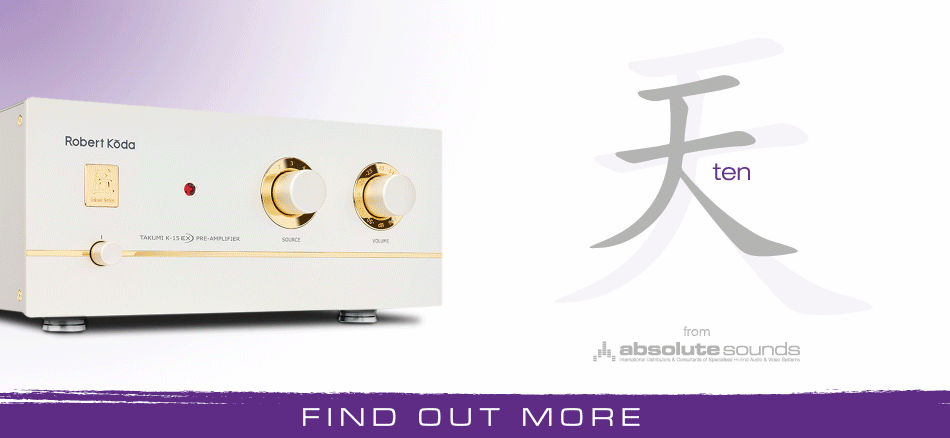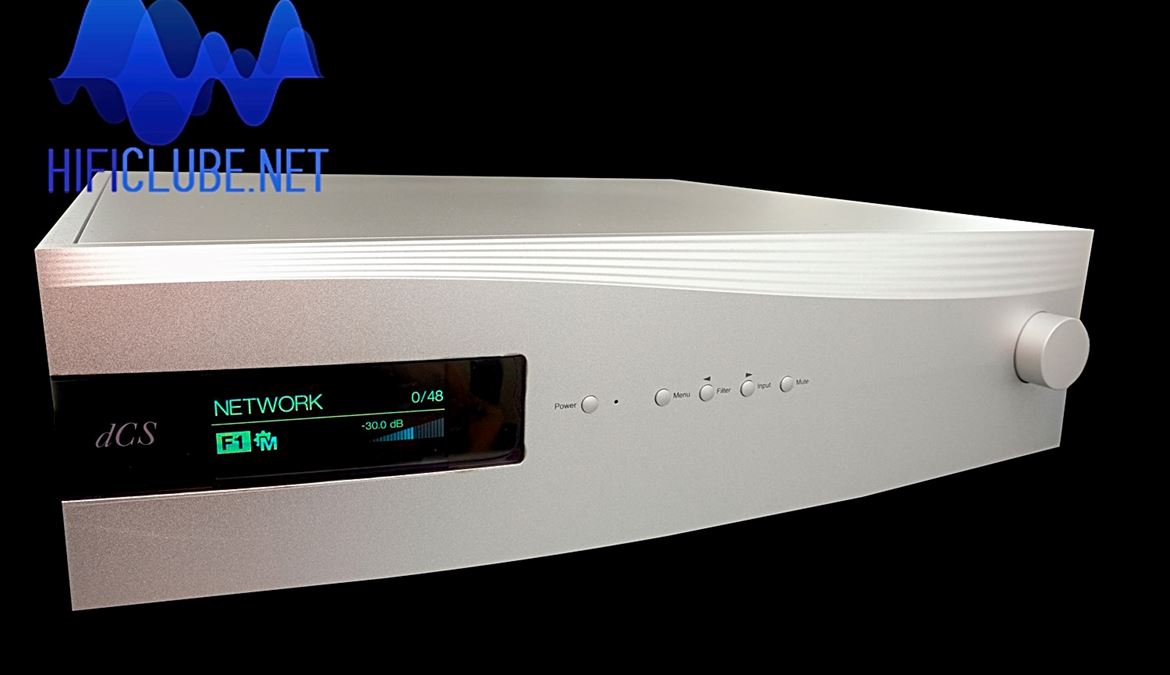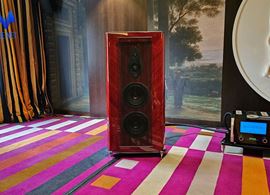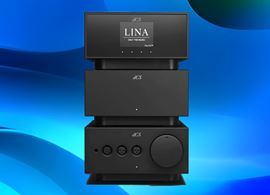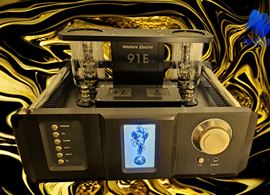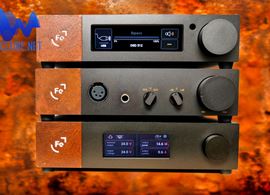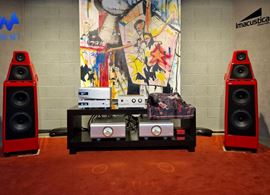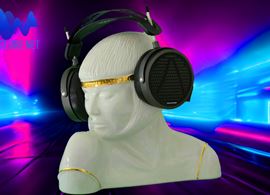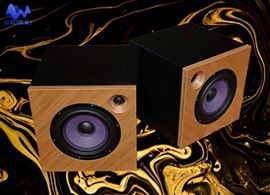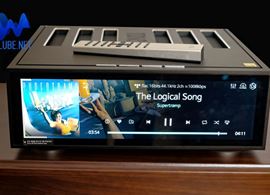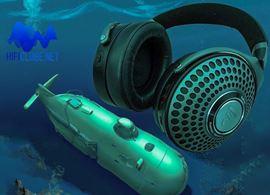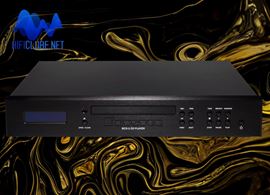World's first review of the new dCS Rossini APEX DAC. JVH listened and concluded that APEX is another small step for dCS but a giant leap for the audiophile community.
People like Oscar Wilde, who have the simplest of tastes, are always satisfied with the best. Unfortunately, I am afraid I am not one of them since dCS DACs, arguably the best in the world sometimes failed to satisfy me, except for Bartok. I found the original Rossini somewhat sterile, despite its clean lab sheet. Perhaps it was too perfect for my not so simple taste. With time something changed, either Rossini or my taste. Because I like it now, a lot. Please, read further to know why.
The Ring DAC
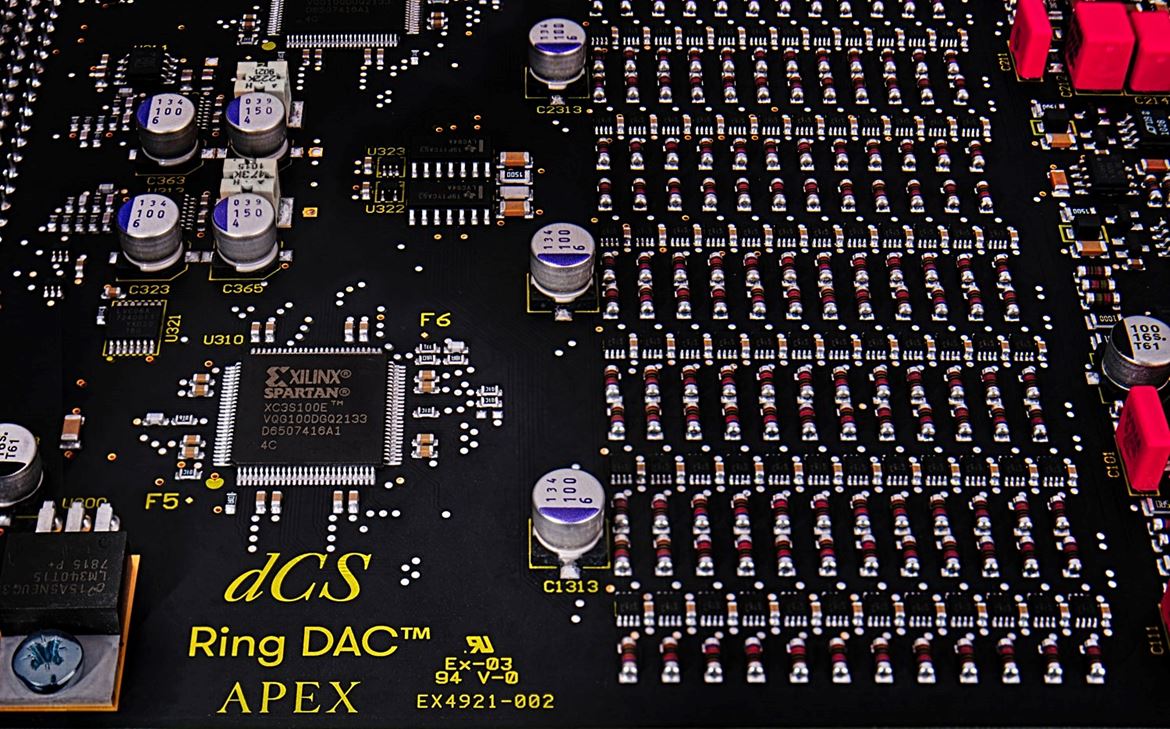
The new APEX Ring DAC circuit board. (photo courtesy dCS)
The RingDAC conversion circuit is unique to dCS. It is a successful attempt to combine monotonic 'single-bit' conversion with 'bitstream', thus achieving a 4.6-bit DSD-type conversion whose 24 possible variable values are matched employing a complex algorithm with the 48 fixed levels of the Ring DAC circuit, overcoming the limitations of the typical DSD single bit and the pulse-width modulation of bitstream. But, of course, this is a gross simplification of an ingenious technology. Read the full technical explanation below (pdf in English).
Improving on perfection
By nature, one cannot improve on perfection. But somehow, dCS has continuously improved its products with upgrades that kept them updated and free from digital obsolescence.
The Ring DAC mapping algorithm (2017) and the v2.0 firmware (2019) were steps in the right direction, and the dCS Mosaic streaming interface launched in the same year worked like a breeze and freed the user from the complexities of 'driving' the Menu with an array of tiny buttons.
…APEX is another small step for dCS but a giant leap for the audiophile community…
The new APEX upgrade, which can be retrofitted to previous Rossini and Vivaldi models, is another small step for dCS but a giant leap for the audiophile community.
According to dCS, the Ring DAC platform was kept basically unchanged with its unique array of resistors aligned like soldiers on parade. However, all the Ring DAC hardware is new, and both digital and analogue performance was much improved. Modifications include:
- Modifying the reference supply that feeds the Ring DAC, resulting in lower output impedance
- Enhancing the filter, summing and output stages of the Ring DAC
- Improving the symmetry of summing stages
- Creating an all-new output stage
- Reconfiguring the main Ring DAC circuit.
- Replacing individual transistors on the board with a compound pair.
Still, according to dCS, these changes brought about, and I quote, 'Sonic and measured improvements and enhancing musical performance. All the 'objective' results are below the measurement limits of an Audio Precision, with the 3rd harmonic reduced by over 12dB' James Cook confided in an email.
But when I asked him for graphics, he excused himself ‘as it is proprietary work’. So those who rely on lab data for ‘listening’ will have to wait and see or have faith in my ears for the time being since my review is exclusively supported by music, not test signals. Sorry about that; I am only human.
Same box better contents
Apart from the APEX module (and the Mapper), the Rossini DAC is not that different from the previous model. From the outside, it looks much the same. Casework is superb with sturdy aluminium construction and the now-iconic sculpted fascia waving curves.
A volume rotary button and five tiny pressure buttons for Power, Menu, Filter, Input and Mute work together to drive the Menu that runs on a screen too small to show record covers but otherwise informative. Unfortunately, it takes some practice to get a hold of it, so use the Mosaic App on your phone instead.
The wide range of facilities comprises phase, channel swap and balance, and level setting – select 2V if you use it as a dedicated DAC and 6V for preamp functions or driving a pair of active loudspeakers. Levels 0.2 and 0.6 are for use with AirPlay.
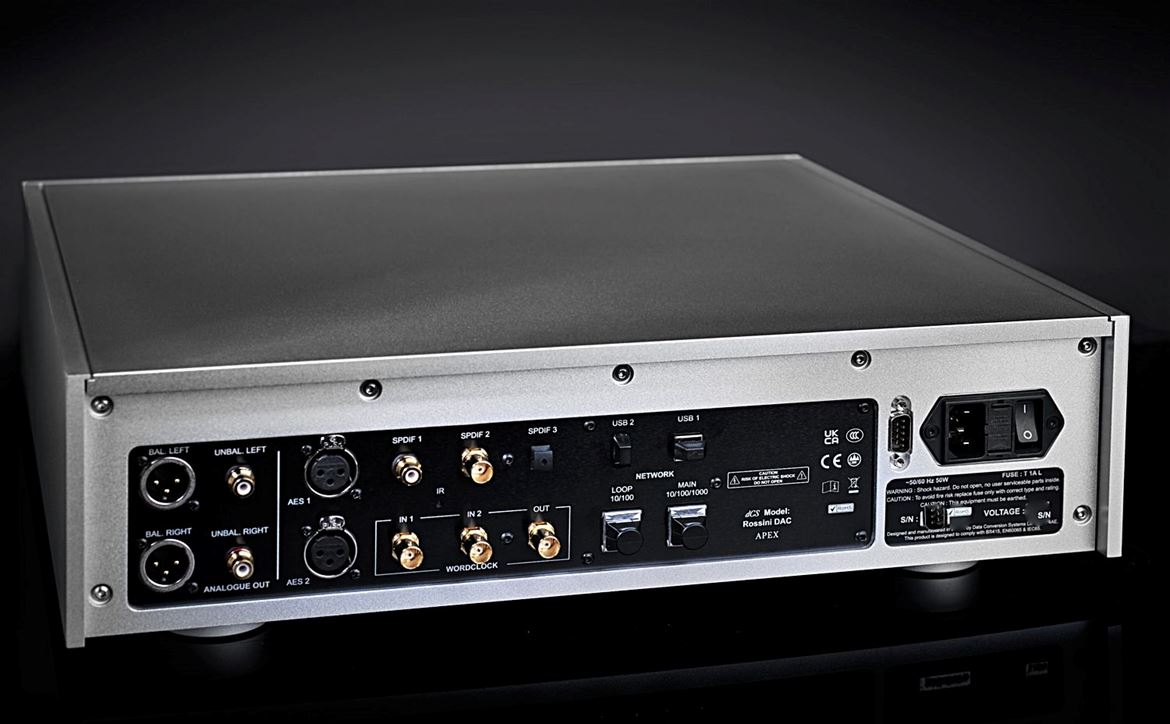
At the back, balanced and single-ended outputs; inputs 2 x AES/EBU on XLR, 1 x BNC, 1 x SPDIF on RCA and optical Toslink, USB A and B. Plus BNC in and out connectors for an external clock. (photo courtesy dCS)
It has that swing too
'Apart from quantitative tests, extensive subjective listening tests were run with music professionals and listening experts’, dCS says. It’s paradigmatic that dCS does not rely on measurements alone. They listen too like the rest of us.
Whoever they are, they did a good job. The first impression is of a robust, tight, articulate, well-defined bass with impressive extension, half to one octave lower than the average DAC.
…a robust, tight, articulate, well-defined bass with impressive extension…
Dynamics are explosive, and Rossini APEX keeps perfect tempo. Pace and rhythm freaks will be utterly satisfied. Moreover, it has that swing too. Rossini's midrange resolution is never at odds with its intrinsic musicality.
...Rossini's midrange resolution is never at odds with its intrinsic musicality...
'Them there highs'
This is the kind of bass performance that works wonders as a foundation for the complex midrange structure - harmonically rich, tonally faultless, timbrally accurate, transparent, musically captivating and involving.
As to 'them, there highs', 'oh, Billie!, they 'sparkle and bubble' and sound like the natural extension of the mids.
I fell in love with you the first time I looked into them there eyes
And you have a certain lil cute way of flirtin' with them there eyes…
They sparkle, they bubble, they're gonna get you
In a whole lot of trouble, oh baby, them there eyes.
From the song by Billie Holiday
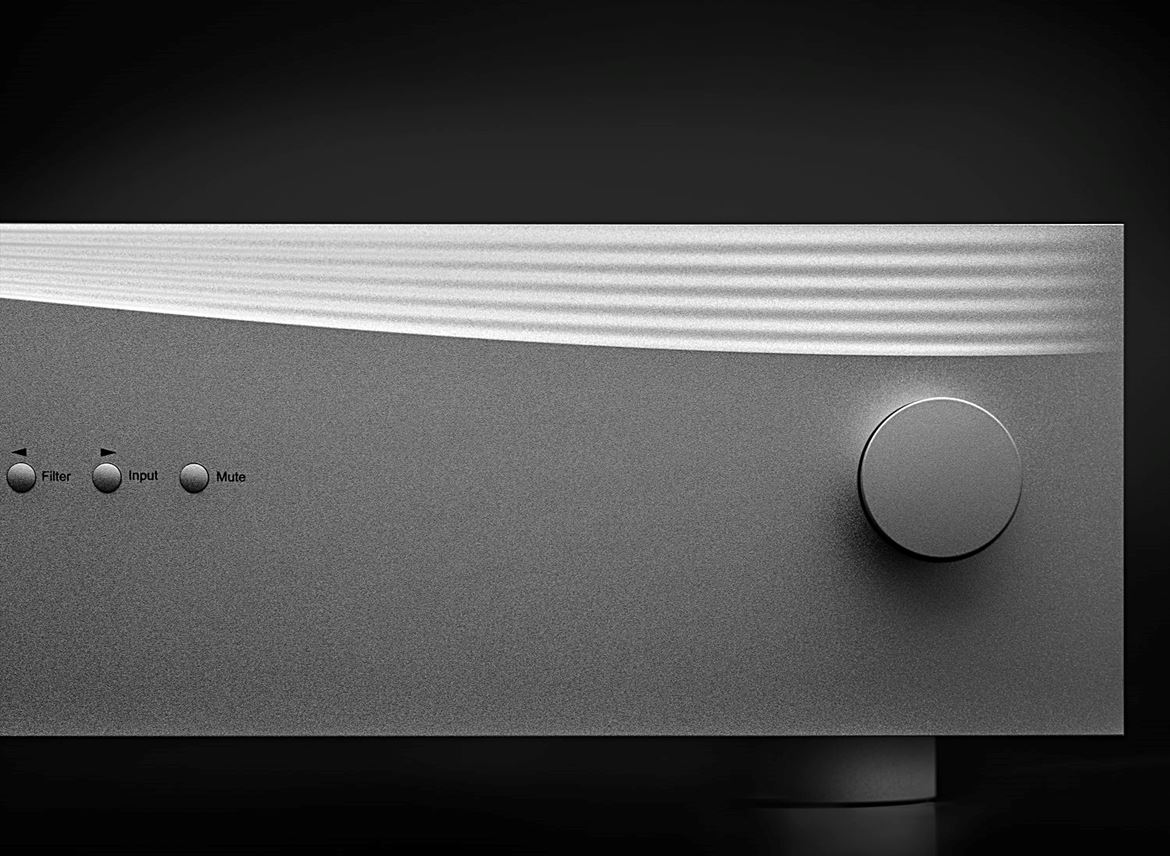
dCS APEX DAC volume control and tiny function buttons (photo courtesy dCS)
Upsampling to DXD and DSD
Rossini is compatible with all known formats, including WAV, FLAC and AIFF up to 24bit-384kHz, DSD128 and MQA unfolding up to 352,4kHz (see MQA Filter below); it allows streaming via Ethernet from a NAS or online music services such as Tidal, Spotify and Internet Radio (Deezer and Qobuz are not available in Portugal at least officially). It is Roon-ready and you can stream through Roon on your PC or access Tidal directly using the dCS Mosaic app.
It is also compatible with Apple AirPlay but lacks Bluetooth for Android phones. That's no big deal since you buy the Rossini only for its high sound quality.
…pace and rhythm freaks will be utterly satisfied…
Upsampling DAC
Rossini upsamples all sampling frequencies to DXD or DSD. Upsampling is active by default, and I could not find a way to deactivate it. It's the nature of the beast.
Note: Set to DSD, the DAC inserts a DSD upsampling stage towards the end of the PCM standard oversampling sequence before conversion to analogue. The feature does not apply to DSD data, which is processed differently.'
The choice of upsampling either to single DXD or DXD+DSD is yours. If I were you, I'd stick to DXD. However, if you select DSD, use Filters 3 or 5 (not 4) for best ultrasonic noise filtering. In any case, only the sample rate of the original data will be displayed.
It also plays native DSD up to DSD128 (without oversampling) via the USB A input, from files saved on a USB stick, with superb quality.
I played a DSD track from a thumb pen of Mahler's Symphony No. 1 - Budapest Festival Orchestra, directed by Ivan Fischer, that was delivered by Rossini APEX DAC with glorious brass and drums whilst DSDx2 was displayed on the screen.
It's funny because this was a native DSD256 track that Rossini was not supposed to play. I gather it downsampled to DSD128 to be able to play it. Nice.
DSD files can also be played in DoP format via USB/PC (Class 2+Asio driver necessary) using JRiver as Media Player, which you must configure (device settings) to work correctly.
Note: DoP (DSD over PCM) was devised by dCS and then made open for other manufacturers to use to allow the transfer of native DSD audio (where the interface is only being used as a transport mechanism) and does not involve any loss of DSD data – it does not involve any conversion of DSD to PCM.
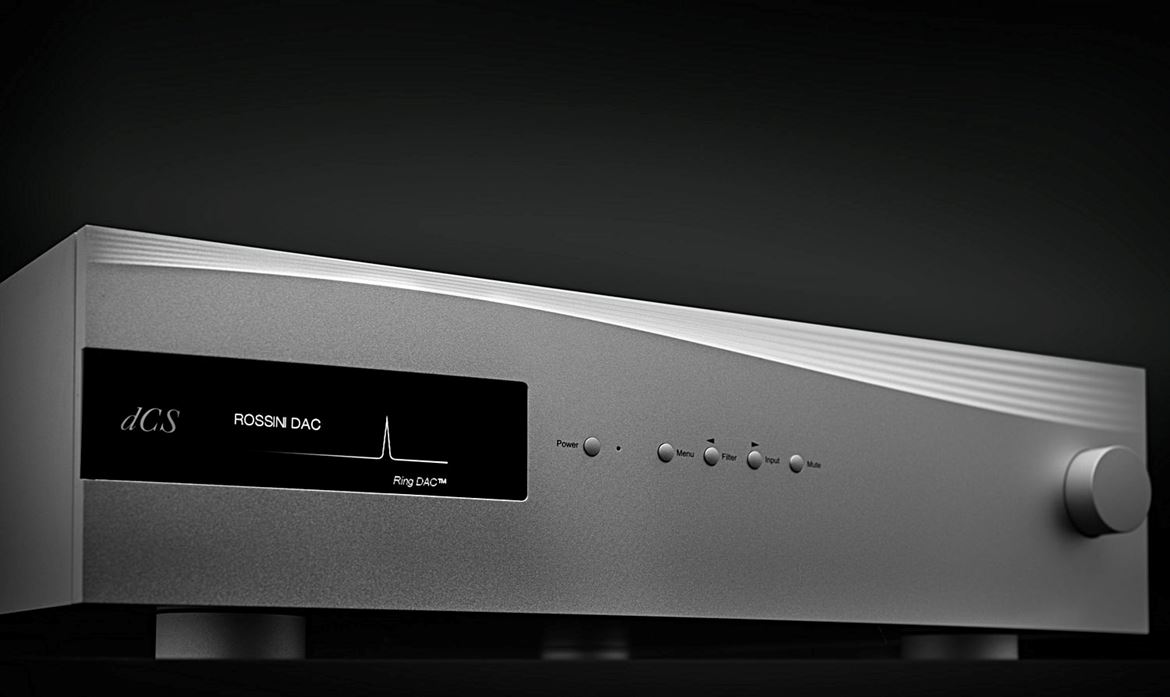
dCS Rossini APEX DAC (photo courtesy dCS)
SACD straight from the source
Rossini accepts encrypted SACD data too. But only from dCS Transports via Dual AES inputs (2xDSD). I wish it had an HDMI input that I could also feed with unencrypted SACD data (.dff and .dsd) from my Oppo Player. I've tried it with a Bryston DAC with HDMI input, and it works just fine. The Player and Clock complete the Rossini System. Alas, I only had the DAC for testing. I have heard wonders about the full system.
Filters
All good DACs today offer a collection of filters to entertain us in the first few days until we opt for one or the other and forget about them.
Filters 1-4 are linear phase types suitable for all sampling rates. Filter 1 has the sharpest roll-off. As a rule of thumb, use Filters 1-2 for classical and jazz and 3-4 for rock, pop, etc. I like Filter 3 for everything (12dB stopband attenuation), but I would not bet my life on a blind test.
Filter 5 and 6 should be selected only with higher sampling rates -176.4 kHz and above.
DSD Filters
With DSD files, the higher the number, the more it reduces out of band noise and bandwidth.
Filter 4 starts acting above 25kHz, thus negating DSD's higher bandwidth advantage. Forget it. Stick to Filter 3, a good compromise overall, but try Filter 1 too, which is full range (- 8.5dB at 100kHz!), even at the (remote) risk of putting your amplifier into oscillation. If you hear distortion, switch to Filter 2 (-21 dB at 100kHz) or 3 (-3dB at 60kHz).
I never heard anything besides excellent sound from all the filters and slight differences between them. Filter 5 sounds smoother than Filter 1 with DSD material; that much I can hear. Or can I?
If you upsample PCM signals to DSD, both choice of filters for PCM and DSD will be active. But only the PCM filter will be displayed. The type of upsampling engaged is also not shown on the screen only on the Mosaic App.
DAC Mapper
Nevertheless, you can easily hear the difference when selecting MAP1/3 (6MHz) vs MAP2 (3Mhz). Try it. I think I still like the old MAP2 better for classical music. It sounds more open, relaxed, and laid back, which is not a bad thing given the precision of the overall presentation. MAP1 and 3 sound tighter, slightly more forward and have better saturation and contrast. And I guess better dynamics, too, albeit at a very subtle level. I told you it's hard to improve on perfection.
MQA filter
There is yet another M1 filter activated by default on top of the others with MQA-encoded signals.
Rossini's USB2 input also accepts native MQA files stored on a USB stick or hard drive. I played an MQA track, 'Fragile from the Storm', by Amy Duncan, from the MQA/CD 'Undercurrents', and it switched the MQA filter.
If you access Tidal directly (no Roon) with your PC connected to the USB1 input, you will not be able to fully unfold MQA files unless you give full control to Tidal in the Settings.
The best results are obtained with Roon/Tidal allowing the full MQA conversion/rendering to develop with Ethernet connection.
Note: dCS informs that for the USB1 input, such as when playing from a PC, the Rossini will perform the MQA render on previously decoded MQA, but it will not perform a full decode and render. In this situation with the USB1 input, the Rossini is only performing the MQA render, not the decode as that has been carried out by the TIDAL software. But you still get a fully decoded and rendered MQA file – just that these stages are split between TIDAL’s software and the Rossini.

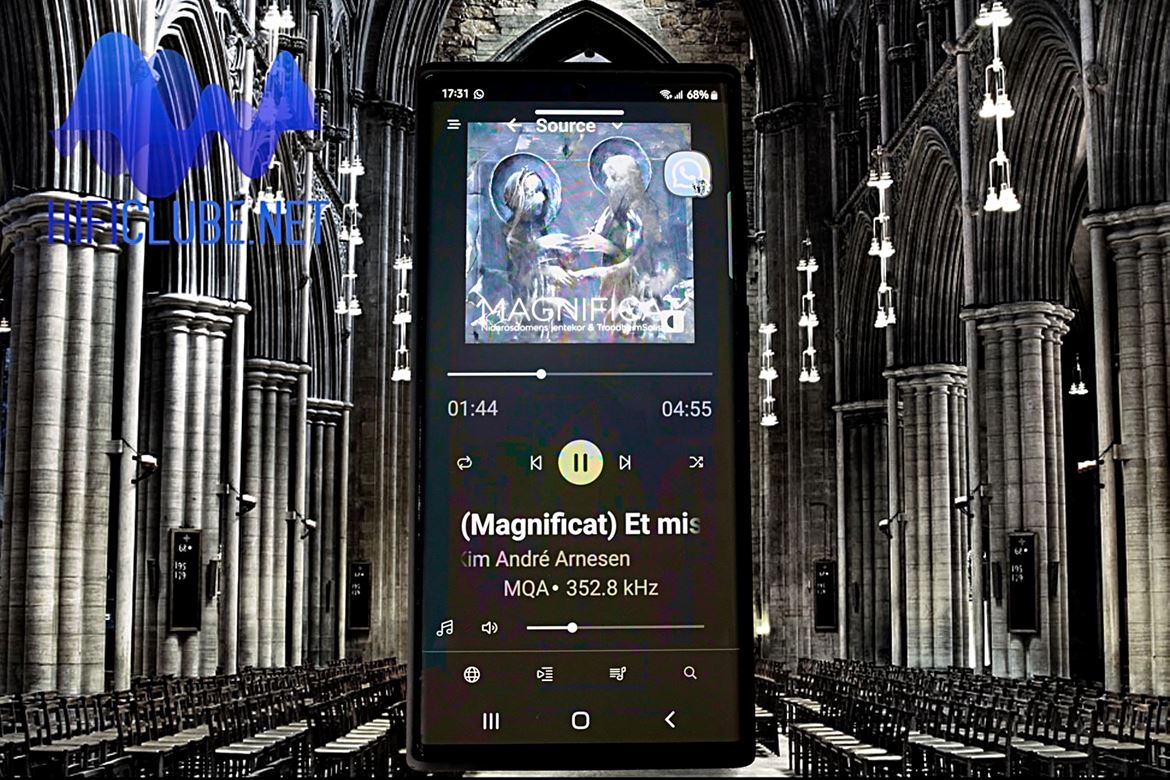
dCS Mosaic App (photo hificlube.net)
Music, Maestro!
I opened the listening session with Rossini's, the composer, Il Barbieri de Siviglia: Una Voce poco fa, by Cecilia Bartoli, from the album 'Sospiri' (Tidal) to find out what a voice touched by angels, and untouched by digital malaise, can do for mental well-being. Let's continue with Casta Diva. OK, I shed a tear now, such is the emotional involvement.
Listen now to Kim André Arnesen's magnificent (Magnificat) Et Misericordia MQA Studio 352.8kHz track (Tidal) and rejoice with the beauty of the voices enveloped by the acoustics of the Nidaros Cathedral; or follow each contribution and relative position in the choir, with the young women standing on the steps of the altar, the lead singer in the middle, right behind the Trondheimsolistene strings, whilst the piano prepares us ever so delicately for the finale with the overwhelming power of the mighty pipe organ. God be praised!
The soloist Lise Berg is slightly elevated, standing between the choir and the orchestra and sings with such religious passion it could convert even an agnostic listener. Rossini APEX DAC is your stairway to heaven.
Rossini APEX DAC is your stairway to heaven
Do you crave a vast soundstage and more slam? Listen to Simon Rattle's up-tempo rendition of O Fortuna, from Orff's Carmina Burana, by the Berliner Philharmoniker. Sit in awe, open-mouthed as I did.
'Uncle Jim', by Jay Leonhart/Mike Renzi, Salamander Pie, dmp, is a tragic story of drunkenness, told (and reproduced by the Rossini) with such vehemence you can smell the booze, feel the double bass in your guts and the piano notes tingling you with each utterance of irony, sarcasm, despair and pathos in the lyrics.
Can one get an even better sound with the Vivaldi that costs 40,000 euros!? Probably, but I am quite satisfied with the Rossini APEX DAC.
Can it justify paying 30,000 euros for a DAC?
It depends on your priorities and wallet size, not on the sound, which is as close to digital perfection as I have ever heard. It is not a question of value-for-money. You either can afford it, or you can't. So, stop whining about the lofty price. The real value is in the music, which is everywhere. Money is just a scarcely available 'commodity'.
To be granted access to digital truth, the whole truth and nothing but the truth, do you have to pay 30,000 euros for the Rossini APEX DAC? Don't shoot the messenger, and find out why for yourself. Visit Imacustica or your local dealer and listen to it, as I did. For free.

